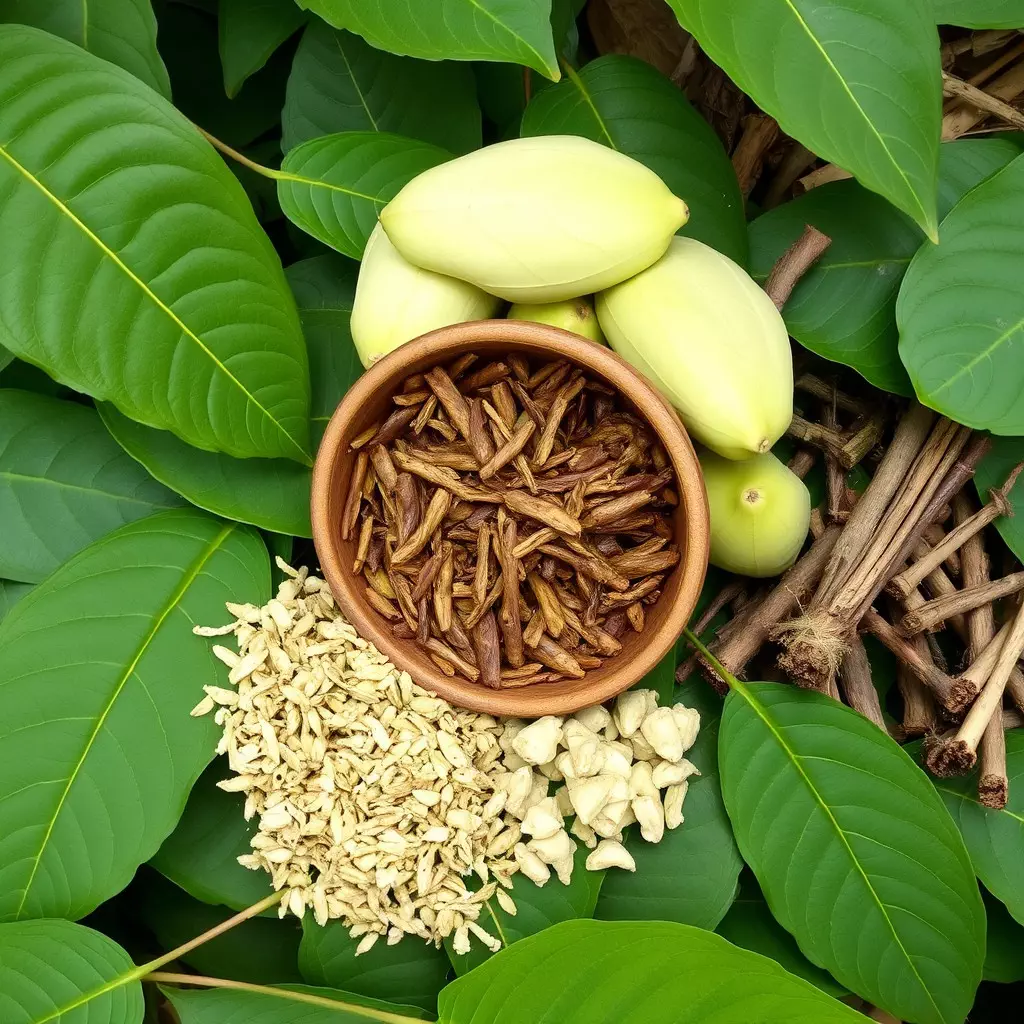Kratom, a plant from Southeast Asia, has gained attention in natural health circles for its potential to alleviate joint pain due to its analgesic properties, with compounds like mitragynine and 7-hydroxymitragynine engaging with opioid receptors. While it offers hope for those seeking alternative pain relief, it's important to use kratom cautiously as research on its efficacy and safety is ongoing. Those interested in discount kratom options should source from reliable suppliers who provide lab test results to ensure product integrity. It's essential to follow recommended dosages, consult healthcare providers, especially if you have pre-existing conditions or are taking other medications, and consider that kratom may also affect mood by interacting with neurotransmitters like serotonin and norepinephrine. The use of kratom for joint pain is an area of active scientific study, promising a natural approach to managing discomfort, provided it's approached with care and under professional guidance.
Discover the potential of kratom as a natural remedy for joint pain relief. This article delves into the botanical’s role in alleviating discomfort, grounded in its scientifically-backed analgesic properties. We explore how kratom can offer comfort to those suffering from joint issues and provide actionable tips for sourcing high-quality kratom at a discount. Join us as we navigate the intersection of traditional use and modern science to understand how this plant might be an effective addition to your pain management regimen.
- Understanding Kratom and Its Role in Joint Pain Relief
- The Science Behind Kratom's Analgesic Properties for Joint Comfort
- Finding Quality Kratom at a Discount: Tips for Responsible Use and Purchasing
Understanding Kratom and Its Role in Joint Pain Relief

Kratom, a tropical tree native to Southeast Asia, has garnered attention in natural health circles for its potential pain-relieving properties, which may offer joint pain relief. The active components found in kratom leaves, known as alkaloids such as mitragynine and 7-hydroxymitragynine, are believed to interact with the body’s opioid receptors, providing analgesic effects. These alkaloids may help alleviate the discomfort associated with joint pain by modulating pain signals in the brain. Users who seek natural alternatives to prescription painkillers often turn to kratom for its soothing effects. It’s important to note that while some users report significant relief, the efficacy and safety of kratom are subjects of ongoing research and debate.
For those exploring the use of kratom for joint pain relief, it’s advisable to consider the source of their kratom. High-quality kratom products can be found through reputable vendors who offer discount kratom options without compromising quality. These vendors often provide laboratory test results that confirm the purity and potency of their kratom strains. Consumers should exercise caution, adhering to recommended dosages and consulting with healthcare professionals before integrating kratom into their wellness routine, especially if they have existing health conditions or are taking other medications. Understanding the nuances of kratom’s role in joint pain relief requires a careful consideration of both its potential benefits and the need for responsible use within a holistic approach to health and well-being.
The Science Behind Kratom's Analgesic Properties for Joint Comfort

Kratom, a tropical tree native to Southeast Asia, has been traditionally used for its medicinal properties, including analgesic effects. The science behind kratom’s ability to provide joint comfort lies in its active compounds, mitragynine and 7-hydroxymitragynine, which interact with the body’s opioid receptors. These alkaloids can modulate pain signals and reduce sensitivity to pain, offering relief for those suffering from joint discomfort. Recent studies have shown that kratom may influence neurotransmitters like serotonin and norepinephrine, which are also associated with mood regulation and stress response. This dual action on both pain perception and mood can be particularly beneficial for individuals dealing with chronic joint pain, as it not only alleviates the physical discomfort but also improves their overall well-being.
For those seeking joint pain relief, discount kratom options are available to make this natural remedy more accessible. It’s important to source high-quality kratom from reputable suppliers to ensure safety and efficacy. As with any supplement or medication, it’s advisable to consult with a healthcare provider before incorporating kratom into one’s regimen, especially if combining with other pain management strategies or medications. The potential for kratom to provide natural relief from joint pain is an area of growing interest, and ongoing research continues to shed light on its mechanisms and optimal uses.
Finding Quality Kratom at a Discount: Tips for Responsible Use and Purchasing

When exploring kratom as a potential aid for joint pain relief, it’s crucial to prioritize both quality and value. Finding discount kratom that doesn’t compromise on purity and potency is key for those looking to incorporate this herbal supplement into their wellness routine. Responsible use begins with sourcing high-quality kratom from reputable vendors who offer genuine products at reduced prices. To ensure you’re getting a good deal without sacrificing quality, research suppliers that have transparent laboratory testing results. This confirmation of alkaloid content and absence of contaminants is essential for effective outcomes and overall safety.
Additionally, consider purchasing kratom in bulk, as many trusted vendors provide discounts on larger quantities. This not only saves money but also ensures a consistent supply over time. Be wary of deals that seem too good to be true, as the quality of kratom can significantly affect its efficacy for joint pain relief. Always adhere to recommended dosages and consult with a healthcare professional before integrating discount kratom into your regimen. With careful selection and responsible use, you can enjoy the potential benefits of kratom while staying within budget. Remember to keep an eye out for sales and promotions from established vendors to maximize savings without compromising on the quality of your kratom experience.
In conclusion, the exploration of kratom as a natural alternative for joint pain relief offers promising insights into its analgesic properties, backed by scientific research. Users considering this option should prioritize sourcing high-quality kratom at discount prices to ensure safety and efficacy while adhering to responsible use practices. By understanding the nuances of kratom and its role in joint comfort, individuals can make informed decisions that align with their wellness goals. With the right approach, kratom may serve as a valuable addition to one’s pain management regimen.






